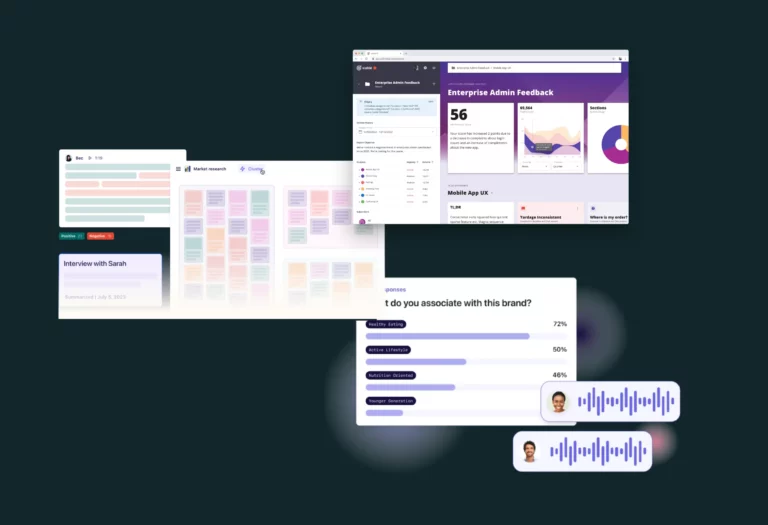As women’s healthcare steps into the spotlight, women’s health no longer gravitates uniquely around hospitals and clinics. As technology is used to empower patients and improve their relation with the healthcare ecosystem, we see that medical care and diagnostics are starting to happen in patients’ homes.
Multiple factors triggered this shift, but it’s clear that home-centered care and diagnostic solutions are here to stay, and they’re here to address unmet patient needs.
We gathered a panel of experts in women’s health – including academics, medical doctors, and startup founders – to discuss how at-home care and diagnostics might address existing barriers and equity gaps for women in health.
The bigger questions around emerging trends
We kicked-off our webinar with three major questions that gave way to a conversation around the emerging and future trends related to at-home care and diagnostics for women’s health
We discussed the challenges to overcome to improve the women’s healthcare space, the roadblocks we’d meet along the way, and finally, we asked our panel of experts to share what could be next for women’s health.
Barriers, gaps, and unmet needs
Lack of personalization, limited in-person time between physicians and patients, unnecessary research, outdated information banks, unnecessary funding for research and innovation — these are just some of the factors leading to women getting access to generic medical care that puts women’s urgent needs on the sidelines.
Clustered factors leading to neglected care
Because of the lack of information and resources to tailor care to women’s needs, women find themselves trying several different prescriptions before finding the right treatment or diagnosis, often dealing with untreated symptoms and the side effects of taking medication that’s not the right fit.
Negligence from the health space leads to women stepping away from seeking medical attention in the first place.
Contrary to common belief, contraceptive treatments are just the tip of the iceberg when it comes to neglected women’s health. There are a great number of conditions exclusive to the female anatomy that are not researched or officially recognized, affecting not only the time to get a diagnosis, but the treatments available and their access.
Outdated healthcare models
Scientific research, clinical trials, and treatments are created and tested with the male anatomy at the core. Facing outdated healthcare systems that follow these principles risks the lives of millions of women, because medical solutions still answer to male-centric health ecosystems.
Responses to medication and treatments, but also symptoms, are different in men and women. However, healthcare models are crafted mainly based on research conducted on male anatomy. If a woman and a man suffer from the same condition, it can take up to 4 years longer for the woman to be diagnosed.
It doesn’t end with diagnostics and treatments. Because white males are still the population segment where medical research and testing is focused, the known information is tailored for this portion of the global population. Innovations receiving funding are the ones with bigger research supporting them, leaving women and non-white segments of the population without a proper healthcare system to care for them.
Blockers to overcome barriers
"Censorship, stigma, there’s too many blockers to count, but they all fall under one form of lack of available data because it has a knock-on effect."
Oriana Kraft
A lack of interest leads to a lack of research, and ultimately a lack of available information to innovate. Without data to make the case, it’s hard to get people to invest in finding new relevant solutions.
Data collection
Because research is biased and there is not enough resource allocation in addressing the knowledge gap, being able to crowdsource data through digital apps is a big step forward to overcome this barrier.
The way we collect data digitally means that there will have to be strict regulations and policies in place, to protect the women who offer their personal medical information to feed the gap of data needed to start crafting new solutions.
Lack of awareness
Enabling data collection and creating information banks are the first steps. Creating awareness is what follows, giving way for patients and specialists to talk about the need to tackle the big unknown surrounding the underprivileged situation of women in the medical space.
As awareness of the reality of current healthcare models and the marginalized status of women and minorities in clinical research and trials gains traction, the private and public sector will have to pay attention to the topic — research, funding, and innovations to address the existing problems are expected to slowly follow.
What the future of women’s healthcare could look like
Creating the future of women’s healthcare means being conscious about today’s challenges, and designing holistic solutions to tilt the scales so that we achieve medical ecosystems that are fair, and inclusive to all.
Investing in research and awareness
The first step is to create an ecosystem where all lives are of equal value, and women receive the attention their anatomy and the conditions exclusive to them require. In an ideal world, heavier investment will be driven towards relevant research, policies that regulate data protection for safe crowdsourcing, and solutions that are prioritized after years of being underplayed.
Just like the current outdated medical model has a domino effect in all healthcare departments, updating the model will have a similar effect — creating a new mindset that takes into account the different outcomes that medical treatments and services have on men and on women.
Shared decision-making
Empowering women with updated knowledge they can access from home will change the way women undergo diagnosis and seek medical attention. Instead of in-person consults being needed, granting access to key information at home helps close this gap, increasing accessibility, particularly to marginalized groups.
These kinds of at-home applications also mean a big deal for those users who identify as women, so they can feel accepted when they’re looking to access women’s healthcare spaces when traditional approaches might not contemplate them as patients.
Offering people the chance to access reliable data in a safe place will also shift the paternalistic relationship we attribute to doctors, driving more initiative when it comes to decision-making on behalf of the patient, facilitating physicians’ jobs, and eventually improving the effectiveness of the in-person moments between them and their patients.
Leveraging data
Data doesn’t only allow solutions to be more custom, but it also creates a track record that women can share with their doctors, so the attention they offer is also more personalized as an outcome.
The digitalization of services helps cluster the incredible amount of updated data, analyze it, and use it to make more personalized recommendations.
This is not to replace the physician-patient interaction, but to make the most of the limited time by empowering the patient and facilitating the clinician’s work through information, so they can make safer and more personalized prescriptions.
Holistic and preventive medicine
With heavy research backing up women’s conditions in the health space, and with empowered patients making decisions along with their doctors, we look forward to a medical ecosystem that focuses on preventive and holistic medicine.
The right information will lead to early diagnosis and awareness, preventing conditions to reach critical stages, decreasing the number of diagnosed patients, and making the diagnostic and treatment stage more efficient as time goes by.
"Home access, not only to digital platforms, but to tools that will help manage things like hormonal tracking, home testing kits, biomarkers, information access, etc. will build the personalized part of women’s healthcare, and will also make it more precise"
Dr. Paulina Cecula

Curious to dig deeper?
We’ve recorded our complete webinar on women’s health so you can gain deeper insights on each of the barriers surrounding women in the medical space, discover what the future of women could look like, and imagine what you can do to be a part of it.
You can also check out our thoughts on 5 things we must to do to improve the US healthcare system.



